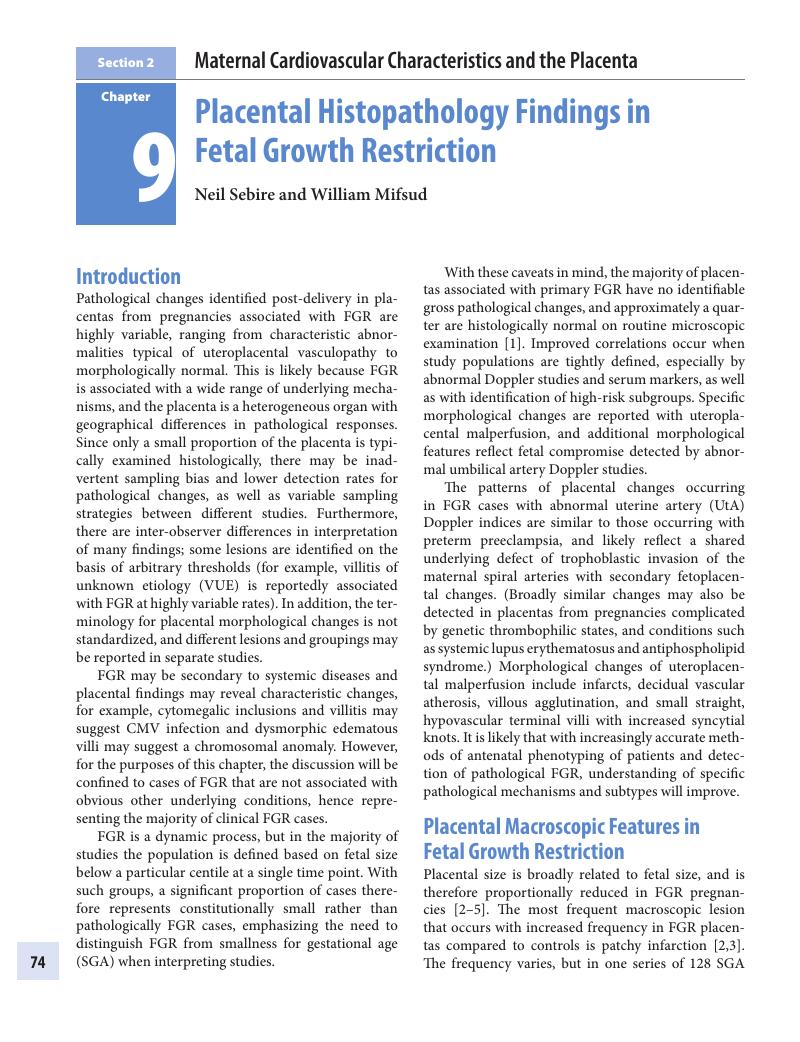Book contents
- Placental–Fetal Growth Restriction
- Placental–Fetal Growth Restriction
- Copyright page
- Contents
- Contributors
- Foreword
- Preface
- Glossary and Commonly Used Abbreviations
- Section 1 Basic Principles
- Section 2 Maternal Cardiovascular Characteristics and the Placenta
- Chapter 8 Maternal Cardiovascular Function and Fetal Growth Restriction
- Chapter 9 Placental Histopathology Findings in Fetal Growth Restriction
- Chapter 10 Maternal Volume Homeostasis in Fetal Growth Restriction
- Section 3 Screening for Placental–Fetal Growth Restriction
- Section 4 Prophylaxis and Treatment
- Section 5 Characteristics of Fetal Growth Restriction
- Section 6 Management of Fetal Growth Restriction
- Section 7 Postnatal Aspects of Fetal Growth Restriction
- Index
- References
Chapter 9 - Placental Histopathology Findings in Fetal Growth Restriction
from Section 2 - Maternal Cardiovascular Characteristics and the Placenta
Published online by Cambridge University Press: 23 July 2018
- Placental–Fetal Growth Restriction
- Placental–Fetal Growth Restriction
- Copyright page
- Contents
- Contributors
- Foreword
- Preface
- Glossary and Commonly Used Abbreviations
- Section 1 Basic Principles
- Section 2 Maternal Cardiovascular Characteristics and the Placenta
- Chapter 8 Maternal Cardiovascular Function and Fetal Growth Restriction
- Chapter 9 Placental Histopathology Findings in Fetal Growth Restriction
- Chapter 10 Maternal Volume Homeostasis in Fetal Growth Restriction
- Section 3 Screening for Placental–Fetal Growth Restriction
- Section 4 Prophylaxis and Treatment
- Section 5 Characteristics of Fetal Growth Restriction
- Section 6 Management of Fetal Growth Restriction
- Section 7 Postnatal Aspects of Fetal Growth Restriction
- Index
- References
Summary

- Type
- Chapter
- Information
- Placental-Fetal Growth Restriction , pp. 74 - 84Publisher: Cambridge University PressPrint publication year: 2018

